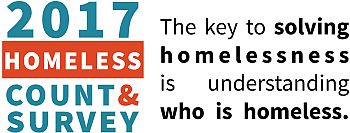 INDIANAPOLIS – The 2017 Point-in-Time (PiT) Count will take place on January 25, 2017. This statewide community effort led by Indiana’s three Continuum’s of Care relies on hundreds of dedicated service professionals and committed volunteers to connect with and record the experiences of people living in homelessness.
INDIANAPOLIS – The 2017 Point-in-Time (PiT) Count will take place on January 25, 2017. This statewide community effort led by Indiana’s three Continuum’s of Care relies on hundreds of dedicated service professionals and committed volunteers to connect with and record the experiences of people living in homelessness.
“The Point-in-Time Count is a significant assessment tool for our state as we work towards the goal of ultimately ending homelessness,” said Lt. Governor Suzanne Crouch. “Conducting this count annually enables us track and focus our efforts in the areas of greatest need to provide services that directly and positively impact our most vulnerable neighbors.”
The U.S. Department of Housing and Urban Development (HUD) requires every Continuum of Care (CoC) to conduct a PiT Count within the last ten (10) days of January each year. The count provides a snapshot of need for individual communities and the state as a whole by counting people who are sheltered and unsheltered on a single night. Indiana has three CoC’s: (1) St. Joseph Continuum of Care, (2) Indianapolis (Marion County) and (3) the Indiana Balance of State Continuum of Care.
Statewide findings from these CoC’s are compiled and reported annually by the Indiana Housing and Community Development Authority (IHCDA). Last year, findings included a 1% decrease in overall homelessness and a significant decrease in individuals, families and veterans identified as being chronically homeless.
“In my roles as Lt. Governor and IHCDA board chair, I am pleased with the continued decrease in our state’s homelessness since 2010, specifically the drastic reductions in the number of individuals, families and veterans identified as chronically homeless. Through the Housing First initiative, permanent, affordable, housing can be provided as quickly as possible, supplying Hoosiers with both the housing and supportive wraparound services critical to avoid returning to homelessness.”
The decrease in Indiana’s homeless population has been attributed to initiatives aimed at increasing the amount of permanent supportive housing and rapid rehousing programs, including the U.S. Department of Veterans Affairs’ Supportive Services for Veteran Families (SSVF) program and the HUD-Veterans Affairs Supportive Housing (HUD-VASH) program.
Another program is the Indiana Permanent Supportive Housing Initiative. Launched in 2008 to further the strategy to end long-term and recurring homelessness, the program provides technical assistance to teams in the areas of selecting tenants, planning services and employing housing first and harm reduction approaches. Since the initiative launched, it has helped to support over 1,400 permanent supportive housing units in Indiana.
While the amount of federal allocations is not directly based on the findings of the PiT Count, HUD considers the outcomes and justifications for upwards and downward swings as additional information for tracking purposes and future strategies on how to house persons permanently.
Additionally findings from the 2016 Point-in-Time include:
- 39% decrease in families identified as being chronically homeless
- 25% decrease in veterans identified as being chronically homeless
- 15% decrease for individuals identified as being chronically homeless
- 4% decrease in the total number of homeless households with dependent children
- 2% decrease in the total number of households without children
- 5,798 people identified as homeless comprising 4,351 households
- 5,107 were staying in homeless programs such as emergency shelters or transitional housing
- 1,282 were under the age of 18
- 663 were veterans
- 513 were identified as chronically homeless
For questions about the 2017 PiT Count, and to request a full copy of the 2016 findings, please contact Brad Meadows, (317) 234-1745, brmeadows@ihcda.in.gov.














